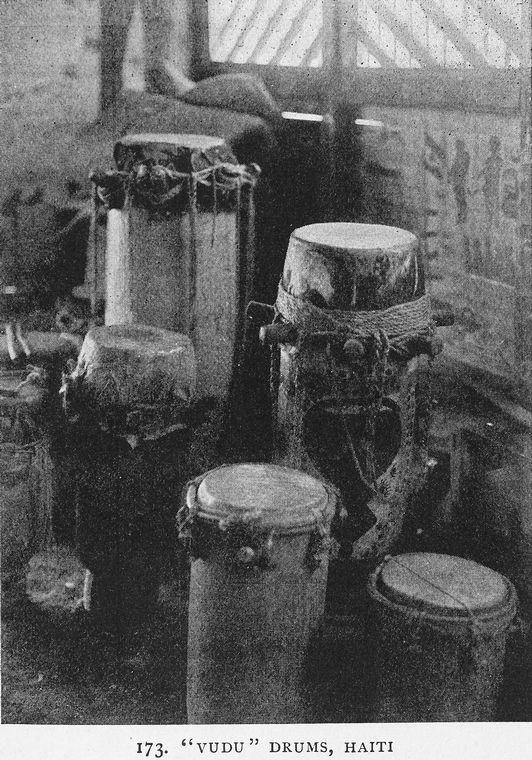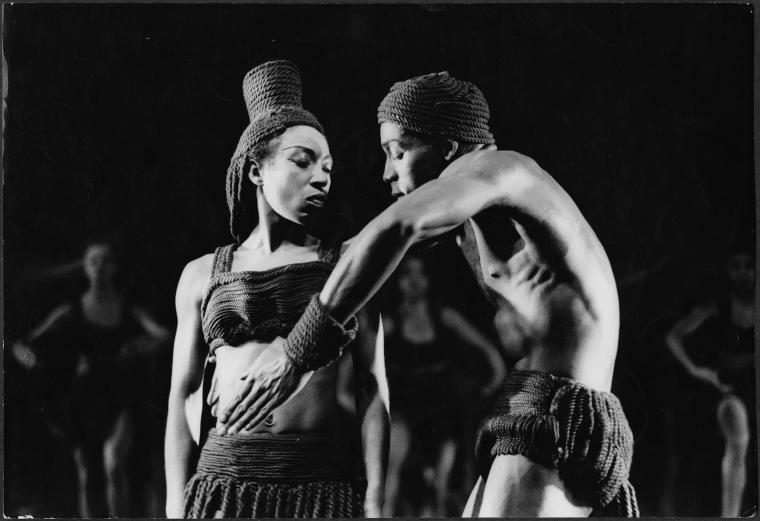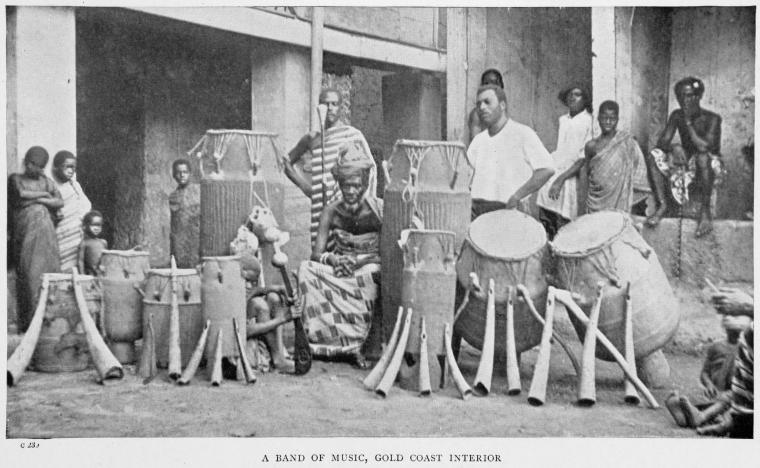Great Albums You May Have Missed: Mongo Santamaria's Afro-Roots (1958-1959)
 In every corner of the world, as far back in history as the time machines of archaeology and anthropology can take us, music has been used by humans to communicate with the gods. It’s hard to remember in our world today, steeped as it is in the bubblegum profanity of pop culture; but Mongo Santamaria’s album, Afro-Roots, reminds us. It is a gateway into the spirit-world. The conga drum itself is our metaphysical guide, bridging the gap between the visible and invisible worlds, and thus bringing us into direct contact with all those psychic forces that control the destinies of humankind (Adegbite).
In every corner of the world, as far back in history as the time machines of archaeology and anthropology can take us, music has been used by humans to communicate with the gods. It’s hard to remember in our world today, steeped as it is in the bubblegum profanity of pop culture; but Mongo Santamaria’s album, Afro-Roots, reminds us. It is a gateway into the spirit-world. The conga drum itself is our metaphysical guide, bridging the gap between the visible and invisible worlds, and thus bringing us into direct contact with all those psychic forces that control the destinies of humankind (Adegbite).
Though recorded in 1958 and 59, the height of the Latin Jazz Era, here Santamaria returns to the African rhythms he grew up learning, a purer derivation of the African-based Yoruba religion: also known as Santería.
Slavery was finally abolished in Cuba in 1886, but much like in the United States, rampant discrimination remained. Secret societies of Afro-Cuban communities sprang up that cultivated African language, dress, religious celebrations and ceremonies; there they achieved a level of toleration by using Catholic symbolism as a veil, substituting the names of Catholic Saints for the names of the gods of their own religion: or Santeria. This arrangement allowed African culture to survive; and over the years, as Havana evolved into “the Latin Las Vegas,” musicians from these communities were invited to play at the touristy clubs, to offer some of the ‘wild exoticisms’ that gave Cuba its color. It was in this environment that a young Mongo discovered the magic of drumming. And by his own admission he never had a lesson. He explains that in Cuba, drumming is either something you feel or something you don't from the beginning. And he felt it.

By the time Santamaria recorded the tracks on Afro-Roots in the late ‘50s, the need for the mask of Santeria had actually dropped away considerably. Santamaria freely uses the names of Yoruba Orisa/deities, using the Yoruba language for many of the chants, with no apparent fear of oppression. In fact the drum, and its clear link to the spirit of Africa, was fast becoming the official symbol of Cuba. In the early ‘60s, in response to mass immigration of middle-class Cubans to America, Castro himself reportedly said, “"let them go, let these who wish to leave Cuba, leave. But the 'drum,' the 'drum' stays in Cuba" (Smallwood).


Musically this dance translates into multi-rhythmic patterns that defy the strict syncopation laws of other traditions, often involving completely different beats that seem to magically blend together into not-consciously-preconceived yet recognizable patterns. Here is the doorway into the chaos of the spirit-world, ruled not by laws of mathematics and logic, but guided only by pure feeling. The patterns that emerge do so because they are felt, not because they make sense mathematically. It is an invitation to celebrate the brutal absurdity of existence while simultaneously marveling at its profound mysteries; to celebrate triumphantly and carefree while dangling your soul over the haunting abyss of chaos; to realize this spirit-world was never separate from our own, we just have a tendency to forget when the music stops. But I wonder, do they forget about us too? That must be part of it, it also reminds THEM of US.
 Not all the music here is meant to be so steeped in spiritual gravitas. There is the more jazz-oriented and soon to be standard tune Afro-Blue, recorded for the first time here. There is the clomping mambo feel of Mazacote featuring piano, sax, and Cal Tjader on vibraphone; And there are plenty of wonderful chants and rumbas as well. Though also based on traditional African Rhythms, in 1950s Cuba “rumba” had become a synonym for “party”. But even the light-hearted songs never seem to lose sight of their own power to conjure, often peeling away their original structures only to break out into the percussion 'battles' that make this album so impressively rich. After all, even the gods like to have a little fun! And I'm certain this is the record they throw on when it's their time to celebrate.
Not all the music here is meant to be so steeped in spiritual gravitas. There is the more jazz-oriented and soon to be standard tune Afro-Blue, recorded for the first time here. There is the clomping mambo feel of Mazacote featuring piano, sax, and Cal Tjader on vibraphone; And there are plenty of wonderful chants and rumbas as well. Though also based on traditional African Rhythms, in 1950s Cuba “rumba” had become a synonym for “party”. But even the light-hearted songs never seem to lose sight of their own power to conjure, often peeling away their original structures only to break out into the percussion 'battles' that make this album so impressively rich. After all, even the gods like to have a little fun! And I'm certain this is the record they throw on when it's their time to celebrate.
In the NYPL Catalog:
Mongo Santamaria's Afro-Roots
Katherine Dunham: Dancing a Life (DVD biography)
Cuban Music by Maya Roy
To Preview Audio Tracks Online:
Timbales y Bongo (BEST AFRO-CUBAN TRACK ON RECORD! IMHO)
Afro-Blue
Conga Pa Gozar
Mazacote
Macunsere
 Please note: online audio links are
Please note: online audio links are
provided for previewing purposes only.
They are compressed and do not match
CD quality audio tracks.
Sources:
"The Yoruba Orisha Tradition Comes to New York City." Marta Moreno Vega. African American Review, Vol. 29, No. 2, Special Issues on The Music (Summer, 1995), pp. 201-206
"African Cultural Dimensions in Cuba." Lawrence L. Smallwood, Jr. Journal of Black Studies, Vol. 6, No. 2 (Dec., 1975), pp. 191-199
"The Drum and Its Role in Yoruba Religion." Ademọla Adegbite. Journal of Religion in Africa, Vol. 18, Fasc. 1 (Feb., 1988), pp. 15-26
Read E-Books with SimplyE
 With your library card, it's easier than ever to choose from more than 300,000 e-books on SimplyE, The New York Public Library's free e-reader app. Gain access to digital resources for all ages, including e-books, audiobooks, databases, and more.
With your library card, it's easier than ever to choose from more than 300,000 e-books on SimplyE, The New York Public Library's free e-reader app. Gain access to digital resources for all ages, including e-books, audiobooks, databases, and more.
If you don’t have an NYPL library card, New York State residents can apply for a digital card online or through SimplyE (available on the App Store or Google Play).
Need more help? Read our guide to using SimplyE.
Comments
thanks!
Submitted by Billy Parrott (not verified) on December 3, 2010 - 9:07pm